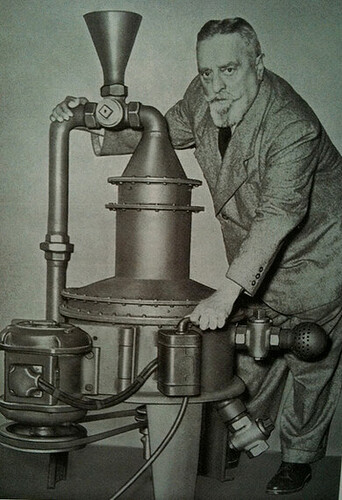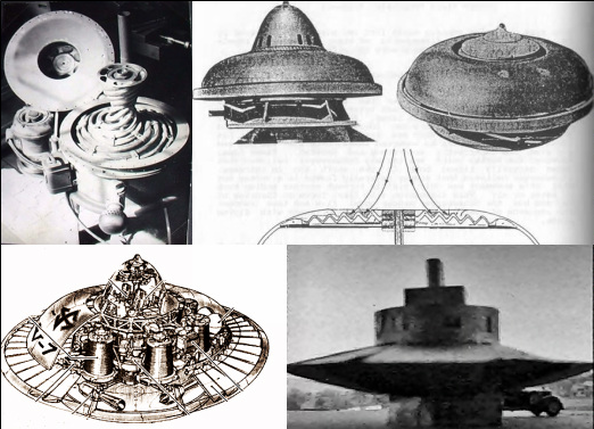Happy to be able to say that here, thank you Rhis #5Filters.
I’m trying to find something concerning Viktor Schauberger’s involvement with Operation Paperclip et.al from the OSS/National Archives files for y’all (having some trouble with a c.c reg. for some reason, card is fine though), un-funnily enough what I can find/access (at the moment), lives only on the alt-media, I did, however, track down Joseph Farrell’s “The Reich of the Black sun” on pdf. Quote; "Gravity, Vortices, and Quantum Numerology Dr. Ing. Ott Christoph Hilgenberg was a student of the renowned Nobel laureate Walter Gerlach, whose work in magnetic spin polarization in 1921 had earned him the Nobel Prize. Hilgenberg, however, while within the “mainstream” of physics, was not one to allow his mind to be constrained by conventional concepts, as any glance at his two little known, but quite unconventional and thought-provoking papers will attest.In 1931 Hilgenberg published what may best be called an arcane paper entitled “Gravitation, Tromben, und Wellen in bewegten Medien”, or “Gravitation, Beats, and Waves in Moving Media”. The title itself is quite suggestive, for it is the first indication that, even before the Nazis, and after relativity, at least one serious and respected German physicist is still thinking of the old idea of an aether, but thinking about it in a way quite different from the static aether concepts of the 19th century that led to the famous Michelson-Morley experiment, and Sagnac’s rotational version of it. For Hilgenberg is thinking of a dynamic aether, spurred in part no doubt by the implications of Sagnac’s version of the famous experiment. Hilgenberg’s paper was arcane and abstruse in the extreme, advocating the idea of gravitation as a vertical ether sink. Thus, as in relativity, gravity was the consequence of a complex geometry, only in Hilgenberg’s case, this meant that “mass” was a geometric result manifest, for example, in a rotating body’s interior. This led Hilgenberg to propose the very unconventional idea that the earth - or any other such rotating massive body-expanded and contracted, in a huge wave-like pattern over time.In 1938 Hilgenberg followed this paper up with a mathematical and theoretical physics tour de force entitled “Quantenzahlen, Wirbelring-Atommodelle und Heliumsechserring-Aufbauprinzip des Perioden systems der chemischen Elemente”, a mind-twister that is no less impressive in English: “A Quantum Number, Vortex Atom Model and Hexagonal-ring Construction Principle of the Periodic System of the Chemical Elements”. Hilgenberg had developed the mathematics for a system of modelling complete atoms according to vorticular rotational principles of the now long-discarded aether! The combined effect of these two papers and their mathematical and theoretical development allowed Hilgenberg to predict a number of effects completely at variance with relativistic physics, and long before similar observations in the late 20th century began to signal significant problems with the relativistic-Big Bangcosmology, e.g., hetero-dyning effects on light coming from a body moving toward the observer, or, to put it simply, why red-shift effects sometimes accompany bodies moving toward an observer rather than away from one.Under Hilgenberg’s influence, Carl Friedrich Krafft took this “vorticular quantum mechanics” one step further, and posited atoms as essentially a geometric or topological construct of the aether that acted as “ether pumps”, taking in or giving off energy based on the rotations of the various rings of dynamic aether around them. He developed this notion even further by positing various combinations of vorticular, rotating geometries as the basis for the then known sub-atomic particles. Krafft, whose views were totally eclipsed by war’s end with the victory of the Allies - which “likewise might be seen as a victory of relativity - was left to self-publish his works in this strange world of “non-linear physics”, which were duly and promptly ignored by the more conventionally minded linear physics of relativity and its proponents. [No amount of explaining, however, can seem to quell the anti-relativist side of things for the simple feet that in most respects the theory of General Relativity has enormous predictive power, and therefore, scientific value and credibility. It is only recently that some crucial observations have arisen to challenge its assumptions]. But is there any indication that all this theory about the vorticular and rotational aspect of a dynamic aether was ever pursued beyond the stage of theory?”
“Viktor Schauberger: Rotational Physics and Extreme Temperature Gradients The story of Viktor Schauberger, an Austrian forester and naturalist, is well-known to any who have investigated claims of Nazi development of flying saucers. Yet, there are aspects of this story that have escaped even Nick Cook or meticulous researchers such as Henry Stevens. These aspects concern three key areas:(1) His concern with “implosion”, extremes of temperature gradients, and vorticular motion were coupled with his detailed study of ancient mathematical doctrines and “occulted physics” within ancient doctrines and philosophical texts. In short, Schauberger was the ideal candidate, from the SS’s point of view, to lead a project involved with areas of physics and esoteric systems that were central to the SS ideology;(2) His project was directly connected to the SS and, much to Schauberger’s own moral disgust and distaste, was forced to use slave labor from concentration camps. Thus, what many have missed, is that this fact places Schauberger’s saucer project firmly within the orbit of the Kammlerstab;(3) Schauberger realized the implications for his “implosion” physics were such that a “super-super bomb” of unbelievable power could be constructed. This means, in effect, that quirky though some of Schauberger’s terminology and ideas might seem from a conventional physics standpoint - he was, after all, a “naturalist” and self-taught physicist and inventor - his ideas were well within the framework being developed in quantum mechanics and the unusual"aether vortex" theories of physicists and engineers like Hilgenberg, Krafft, or even the great Gerlach himself.In a nutshell, Schauberger’s theories bring us to the very edge of what appear to be a wartime effort - a well funded, and deeply black effort - on the part of the SS to understand the relationship of the zero point energy, rotating fields,and gravity.1. His Basic Conceptions Schauberger began his little known and quite unconventional career as an “unorthodox physicist” as a forester for the Austrian government. One observation -a breathtakingly simple one -launched him on his career. One day Schauberger observed a trout in a clear, fast moving stream. The trout was stationary in the swift current, using a minimum of effort to remain in place: a flick of a fin here, a small movement of the tail there. As he pondered this well-known, but little understood fact, he came to the realization that the trout was using far less energy to remain motionless than conventional physics would allow. After all, the fish should have been swimming like crazy just tostand still. But that was not all. Schauberger then wondered how the trout, again with so little apparent effort and expenditure of work, could suddenly leap from the water several feet, and land upstream against the current. Schauberger decided to study the phenomenon. What he found was the fish seemed somehow to employ extremes of temperature to achieve their stationary place, or, conversely, to leap suddenly from the water against a swift current. As molecules “condensed”, they cooled, and gave off energy in the form of heat. Schauberger added one factor that brought him into the realm of the unconventional vorticular physics that Hilgenberg, Gerlach, Krafft, and others inGermany were developing: whenever such “condensing” took place naturally in nature, it was accomplished by a spiralling motion toward the center of a vortex, a form of motion he called “implosion.” Schauberger speculated that, by deliberately forcing matter into such a motion, by deliberately compressing it via a spiral vorticular motion, matter might reach such a state that particles in atoms becomes “unglued” and transform into a new form of energy. In short,what Schauberger was proposing was a form of cool plasma, brought about by vorticular motion. [Stevens, “Hitler’s Flying Saucers”; Callum Coats, “Living Energies: Viktor Schauberger’s Brilliant Work with Natural Energy Explained”]Schauberger supplemented this idea with all manner of study of natural examples of these types of spirals, well known to mathematicians to incorporate the Golden Section, and the Fibonacci sequence. In his own quirky way and terminology, Schauberger was talking about “cold plasmas” and cold fusion, concepts well in advance of any physics of his day, conventional or otherwise.These ideas led Schauberger - like his more orthodox quantum mechanics contemporaries - to the conclusion that energy was relatively free and limitless if one only knew how to tap into it. And with extreme temperature gradients,rotating media and compression of matter to an intense plasma state - Schauberger thought he knew how. These ideas quickly brought him to the attention of a fellow Austrian who was interested in energy independence for his own reasons: Adolf Hitler.In what surely must be one of the most surreal meetings ever held between an “orthodox mainstream physicist”, a political leader, and an “alternative science” proponent, Schauberger was invited - summoned would be a more appropriate word - to Berlin for a private audience with Reichskanzler Hitler. A measure of the importance that Hitler attached to this meeting may be gleaned from the fact that once Schauberger had accepted Hitler’s invitation, his diplomatic papers were expedited in one day. Callum Coats then describes the surreal meeting:"Hitler…greeted him warmly as a fellow countryman, telling him that he had studied all the reports about Viktor’s work thoroughly and was very impressed with what he had learned."Thirty minutes had been allocated for the discussions, which Prof. Max Planck had been requested to attend as scientific adviser shortly before he was rudely deposed from his position as Privy Councilor. This exchange of views eventually lasted 1 1/2 hours, during which Schauberger explained the destructive action of contemporary technology and its inevitable consequences. He contrasted this with all the processes of natural motion and temperature, of the vital relation between trees, water and soil productivity, indeed all the things he considered had to be thoroughly understood and practised in order to create a sustainable and viable society."When Viktor had finished his explanations, Max Planck, who had remained silent, was asked his opinion about Viktor’s natural theories. His response was the remarkable and revealing statement that 'Science has nothing to do with Nature.'Nothing further came of the meeting, but the lecture had undoubtedly made an impression on Hitler, if not on Max Planck. It was in 1943 that Schauberger’s formal contact and work on a saucer project for the SS began.Nazi Secret Weapons and the Cold War Allied Legendhttp://myth.greyfalcon.us/sun.htm27 of 561/9/2016 10:31 AM
German Schematic of the “Compression” Turbine of the Repulsine(Schauberger) was declared fit for active duty and was inducted into the Waffen-SS, very much under duress. He came under the control of Heinrich Himmler, who forced him into research to develop a new secret weapon. Providedwith suitable accommodation at Schloss Schönbrunn, the nearby Mauthausen Concentration Camp to supply the workforce of prisoner engineers, Viktor was threatened with his life if he did not comply with orders and carry out this research.In spite of these threats, however, Viktor put his foot down and demanded from the SS Command the absolute right to select the various engineers he needed. He further demanded that any technicians he chose were to be removedentirely from the camp, fed properly, dressed in normal civilian clothes and billeted in civilian accommodation, otherwise they would be unproductive. As he explained, people who live in fear of their lives and under great emotional stress could work neither consistently nor creatively. Surprisingly the SS agreed and so Viktor selected somewhere between twenty and thirty engineers, craftsmen and tradesmen front Mauthausen, to be accommodated in various houses near the plant.It is to be noted that the induction of Schauberger into the SS, the use of concentration camp labor, and the SS’s behavior in allowing Schauberger full latitude to pursue his project in the manner he wished, even as regards the housing of the concentration camp workers, are all classic signatures of Kammler’s “think tank” group. In short, this is very strong evidence that Schauberger’s team was one component of the Kammlerstab.Few of the scientists and engineers Schauberger collected for his project understood what he was trying to construct. And it is difficult to get a measure of just exactly what Schauberger did accomplish, since all of his wartime German patents have simply disappeared, no one knows where.2. His Disks and TurbinesIt seems certain, however, that Schauberger’s disks approached the boundary between the German “suction” saucers and field propulsion craft proper, as a glance at Schauberger’s own postwar reconstructions of what these craft looked like will demonstrate. A postwar design exists for a home electricity generator based upon a simple, though quite unusual, jet turbine. This “Tornado Generator” employed a turbine that in turn was made up, not of blades, butof hollow, antelope-horn-like spiralling tubes. Once air was forced into this turbine and its tubes, it was then compressed, via the spiralling motion of the air through the horns, until it escaped, expanded, and pushed the whole tube-turbine assembly along. This expanding air was then recirculated to the turbine,where it was again compressed, and so on. Needless to say, the construction of such a complicated turbine would have required the most exacting machining and engineering skills. There is every indication that a similar device or turbine became the basis of Schauberger’s wartime research. Coats reproduced the following series of photographs and schematics of Schauberger’s wartime “Repulsine” saucer in his book “Living Energies”:Nick Cook, who followed the Schauberger trail via Coats and his research on the Austrian naturalist’s strange ideas back to Germany,commented at length in his book, “The Hunt for Zero Point”, as follows:"Something about this whole strand of development had conspired to make it the most classified form of technology in existence. Even moreso than the bomb."Unlike the bomb, however, this was a secret that had held for more than 50 years."Days after the end of the war, US intelligence agents found Schauberger in Leonstein and apprehended him. Exactly as the (Nazi UFO)Legend had it, the agents, who were almost certainly Counter-Intelligence Corps -the same outfit that had detained and interrogatedSkoda’s director Wilhelm Voss - were remarkably well informed about his entire operation. It was as if, Schauberger noted later, someone had guided them directly to him.“Very few people would have been in position to familiarize US Intelligence with the parameters of Schauberger’s research or its exact location, but one of them would most certainly have been SS Obergruppenführer Hans Kammler”.Cook continues:"That night, back at my hotel, I applied myself to a study of the Schauberger effect that had been written up by a researcher called Callum Coats. I had picked up a copy of one of his books at the Schauberger Institute. In it, there was a description of what happened when a Repulsine was rotated at 20,000 rpm. The high rotation speeds appeared to cause the air molecules passing through the turbine to pace sotightly together that their molecular and nuclear binding energies were affected in a way that triggered the anti-gravity effect. ‘A point isreached where a large number of electrons and protons with opposite charges and directions of spin are forced into collision and annihilate with one another,’ Coats wrote. ‘As lower rather than higher forms of energy and the basic building blocks of atoms, they are upwardly extruded as it were out of the physical and into virtual states.’“Virtual states? What the hell did that mean?”…‘I stand face to face with the apparent “void”, the compression of dematerialization that we are wont to call a “vacuum”,’ Schauberger had written in his diary on 14 August 1936. 'I can now see that we are able to create anythingwe wish for ourselves out of this “nothing”.‘That is, the vacuum for Schauberger and his rotational, vorticular concepts, was but another “super-compressed” and “supercooled” state of matter.In any case, one test of such a Schauberger saucer allegedly took place in Prague in 1945, breaking loose from its test anchor, it quickly flew upward hitting the roof of the building. Given the extraordinary latitude accorded to Schauberger by his SS controllers - doubtless up to and including Kammler himself - it is evident that “the German scientific leadership was interested in implosion and in what Schauberger had to teach them but they did not necessarily want to be limited by the use of air to achieve these results. Instead, they may have wanted to use Schauberger ideas but actuating these principles with electronic components.” [Stevens, Hitler’s “Flying Saucers”] This willlead to the most fantastic projects of all in the Kammler Group’s esoteric think tank. Whatever can be said, Schauberger’s unorthodox approach to jet turbine design certainly, and by all accounts, was wildly successful, so much sothat he became the object of a curious attempt by some Americans to develop the idea.3. Implosion and the USAAs was seen, Viktor Schauberger and his unorthodox ideas came to the attention of US Intelligence at the end of the war. And thus was launched the strangest episode in Schauberger’s already strange career, the “American Episode”.[The best and most complete history of this episode is in Callum Coats’ “Living Energies”. My treatment of it here relies upon Coats, with the exception of my interpretation of its significance. Coats himself notes that the data for this period is precariously slim: “Before embarking on this last and lamentable chapter in Viktor Schauberger’s life, I would like to state at the outset that significant and verifiable detail about it is extremely difficult to ascertain, mainly because all those involved, with the exception of Karl Gerchsheimer with whom I spent two days, have passed away in the interim. In whatever information is available concerning this tragedy, there is a profusion of conflicting statements, interpretations and timetables which, 37 years after the event, makes the unraveling of what precisely took place in this, for all concerned, abortive endeavour rather problematic.”]The difficulties Schauberger experienced during his stay in America were similar to those he encountered first in Austria, and then later during his famous visit with Hitler and Planck. First, being self-taught, he did not possess the physicist’s technical language with which to express his ideas. Thus, he invented his own technical language, and often the translation between the two was difficult. Second, Schauberger having already witnessed the theft and disappearance of his patents by the Nazis, was understandably reluctant to be completely forthcoming to his American “friends.” Finally, Schauberger no longer had working prototypes of any of the devices he had built. Schauberger was first brought to the attention of a group of private American “investors” by one Karl Gerchsheimer, who emigrated from Germany in 1922, eventually settling in Texas and marrying an American wife in 1937.According to Coats, it appears that Gerchsheimer became involved with the us military during World War Two in its Counter-intelligence Corps, eventually becoming the man in charge of all transport, logistics, and accommodation for the American army of occupation in Germany after the war. He returned to the usA in 1950 and established a metal fabrication company, manufacturing a number of items for NASA under contract. In this capacity Gerchsheimerbefriended wealthy American Philadelphia steal magnate Robert Donner. Gerchsheimer’s familiarity with Schauberger’s work, doubtless acquired during his Counter-intelligence years in Germany, and his disenchantment with Dr. vonBraun’s rocket program, led him to propose to Donner that they visit Schauberger in Germany personally, to offer him the opportunity of private development of his “implosion” ideas. Gerchsheimer sold the project to Dormer – an intense patriot - by maintaining it would ensure American technological dominance for decades to come.A meeting in Bavaria was finally arranged between Gerchsheimer, Walter Schauberger (Viktor’s son), and Viktor. Eventually squeezing out the European competition for his ideas with promises of large funding, Gerchsheimer was able to persuade Viktor to come to America. As part of the contract, negotiated for an American stay of three months, it was agreed that “Walter Schauberger, a physicist and mathematician, was to accompany his father and would beexpected to stay for a year in order to assist in the scientific interpretation of Viktor’s ideas for which there was often no recognized scientific terminology.” [Coats, “Living Energies”] Schauberger also stipulated that his trustedmachinist, Alois Renner, who had collaborated with him in the construction of several of his devices, be brought to the USA as well. Gerchsheimer was of the opinion, however, that Walter Schauberger “neither knew nor understood much about his father’s theories.” Eventually, the two Schaubergers flew to Dallas, and then were driven to Sherman, Texas, where they were virtually interred as the “house guests” of Donner associate Harald W. Totten on his ranch.Gerchsheimer quickly became disenchanted with Schauberger’s ideas, which appeared to him to be increasingly so much gobbledygook. Having communicated these concerns to Robert Donner, who became concerned for the successof his project, Donner flew to Brookhaven’s National Atomic Research Laboratories to seek expert scientific opinion. He secured the services of a technician who also spoke German, Eric A. Börner, who was sufficiently familiar with thet erminology of nuclear physics "to be able to translate and transmit any information to the scientific evaluators that the Schaubergers might provide.“Viktor Schauberger spent about 10 days from August 20th to August 31st writing reports to Börner. He had been instructed to write them in his own words, without regard to attempt to use “proper” scientific terminology. Because ofthe actual physical distance between the Schaubergers and Eric Börner, and the inter-mediator-ship of Gerchsheimer, the Schaubergers gained the impression that it was Börner himself who headed an important particle accelerator project then underway at Brookhaven. And this in turn magnified their fears about the possible motivations behind the sudden American interest in their “implosion” concepts.Walter Schauberger admitted that in the process of producing their reports, it dawned on them that a bomb could possible be produced through implosion that was magnitudes more powerful than the hydrogen bomb. Assuming Börner to be more influential than he was, Viktor and Walter became convinced that all the information they were supplying to him was being passed directly to the US government and the military. While Coats himself downplays this potentiality, it is worth recalling that a similar “compression-decompression” principle lay behind the “molecular” bomb of Dr. Nowak, and hence, their concerns may have come less from a misunderstanding of Börner’s role, and more from an acquaintance with the work being done by the SS in Nazi Germany. In any case, I do not believe it is entirely fair to the Schaubergers to discount the possibility that the whole"private funding” venture via Robert Donner and Karl Gerchsheimer was not an operation designed to place into the hands of the US military and its research facilities the fundamental outlines of Schauberger’s concepts.In any case, a meeting was held on the Totten Ranch in early September 1958. Present were the two Schaubergers, Robert Donner, Boerner, and possibly Viktor Schauberger’s machinist, Alois Renner. Based principally on the reportshe had received, Börner reported to the group that Project implosion was “a viable proposition.” Börner believed that “the solution of the problem of energy lay in the proper interpretation of Max Planck’s equation E=hv, formulated in1900, and the Freidrich Hasenohrl-Albert Einstein equation E=Mc2.” [Coats rightly notes that is was first Hasenohrl who had postulated the equation in 1903 in the form of m=E/c2. Hasenohrl’s equation is slightly different than Einstein’s which is properly E=Mc2, where the capital M stands for a mass difference between two observed masses, rather than simply a lower case “m”, which stands simply for mass. The point is picky, but important, as the massdifference as Einstein formulated it is crucial to the point he is developing in Special Relativity].Nazi Secret Weapons and the Cold War Allied Legendhttp://myth.greyfalcon.us/sun.htm28 of 561/9/2016 10:31 AM
Kraftstrahlkanone Schematic reproduced by Henry Stevens]. Doubtless Börner had in mind a rather remarkable paper that Walter had included in his reports, a paper that related these two fundamental equations, plus Kepler’s Third Law of Planetary Motion. [Coats, “Living Energies”, contains a synopsis of this rather remarkable idea. Needless to say, the paper is not the twenty-six dimensional monster of modern string theory]. In any case, with Viktor’s health failing and his insistence to be returned to his beloved Austria as quickly as possible, the situation quickly deteriorated between the Schaubergers and Donner. Donner essentially held the two Austrians hostage until Viktor signed a contract handing over all of his ideas, inventions, and conceptions to the Donner-Gerchsheimer consortium. Only with considerable pressure was Donner even persuaded to provide Viktor with a German translation! Coats himself states:"I have studied this document myself and it does state in quite unequivocal terms that not only were all Viktor’s models, sketches, prototypes, reports and other data to become the sole property of the Donner-Gerchsheimer consortium, but that Viktor was to commit himself to total silence on anything connected with implosion thereafter… The deplorable upshot of all this, however, is that all Viktor’s models, prototypes, drawings, detailed data, including Professor Popel’s original report implying what might be termed “negative Friction” was an actuality, have remained the possession of the Donner-Gerchsheimer consortium.* That this report was actually part and parcel of this project is confirmed by Viktor’s reference to it in one of his reports to Börner dated 23/24 August 1958".What does all this mean? For one thing, it means that during the precise period that Nick Cook notes that all references to anti-gravity research began to disappear in the British and American Press, an American industrialist, with obvious ties to the defense and nuclear research agencies of the USA, had successfully obtained all of the papers of one of Nazi Germany’s most deeply classified research projects scientists. For another, it seems to indicate that theremay have been more to the science Schauberger had propounded than orthodox mainstream science will admit to, or that the contemporary military will allow to be discussed. In any case, it is clear that Schauberger’s ideas fit in quite well with the vorticular and dynamic aether ideas of the vacuum energy flux potential, or Zero Point Energy, apparently under theoretical development in Nazi Germany both by “orthodox” and by less mainstream scientists.”" https://www.nonstopsystems.com/radio/pdf-hell/article-thors-hammer.pdf
*Italics mine.
I also recommend Farrell’s work on the NAZI nuclear programme, other recent research (including documentaries aired on Freeview), having revealed that the NAZIs were pursuing their peculiar “spin” (“needs must when the devil drives”), on nuclear science with regard to weaponry and that not all of the avenues they were led down as a result were unproductive.
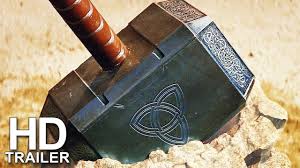
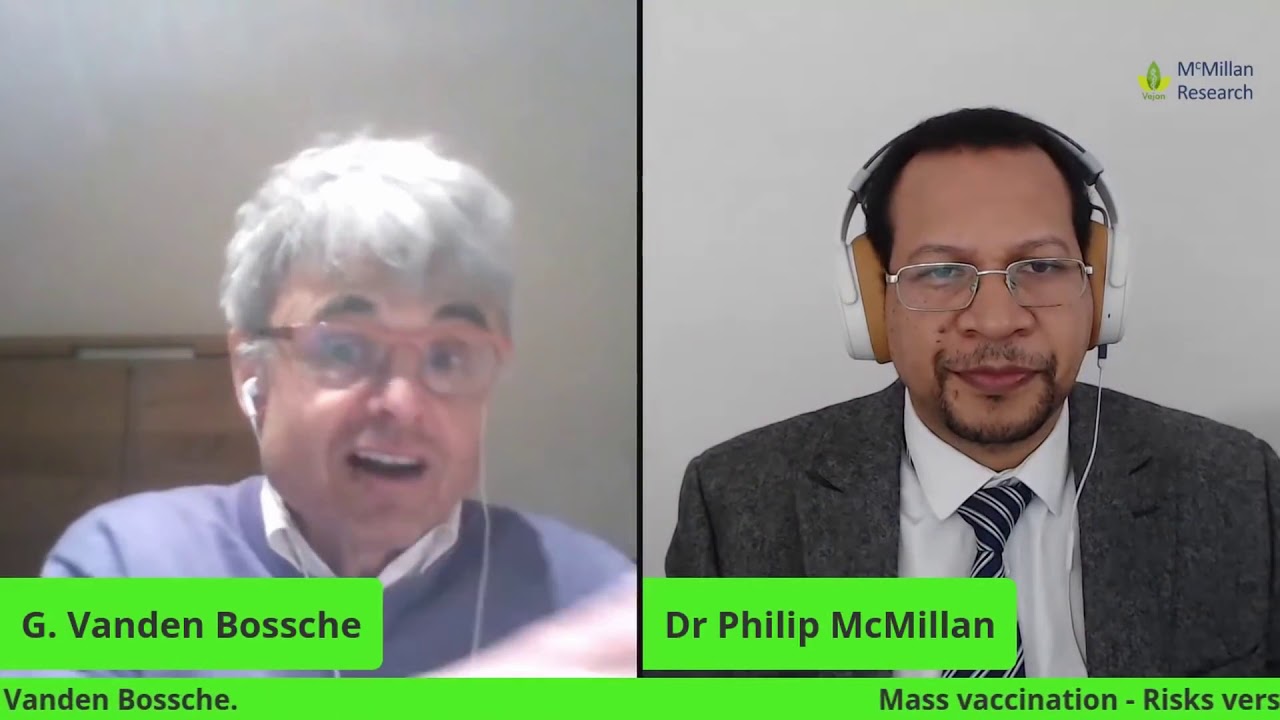


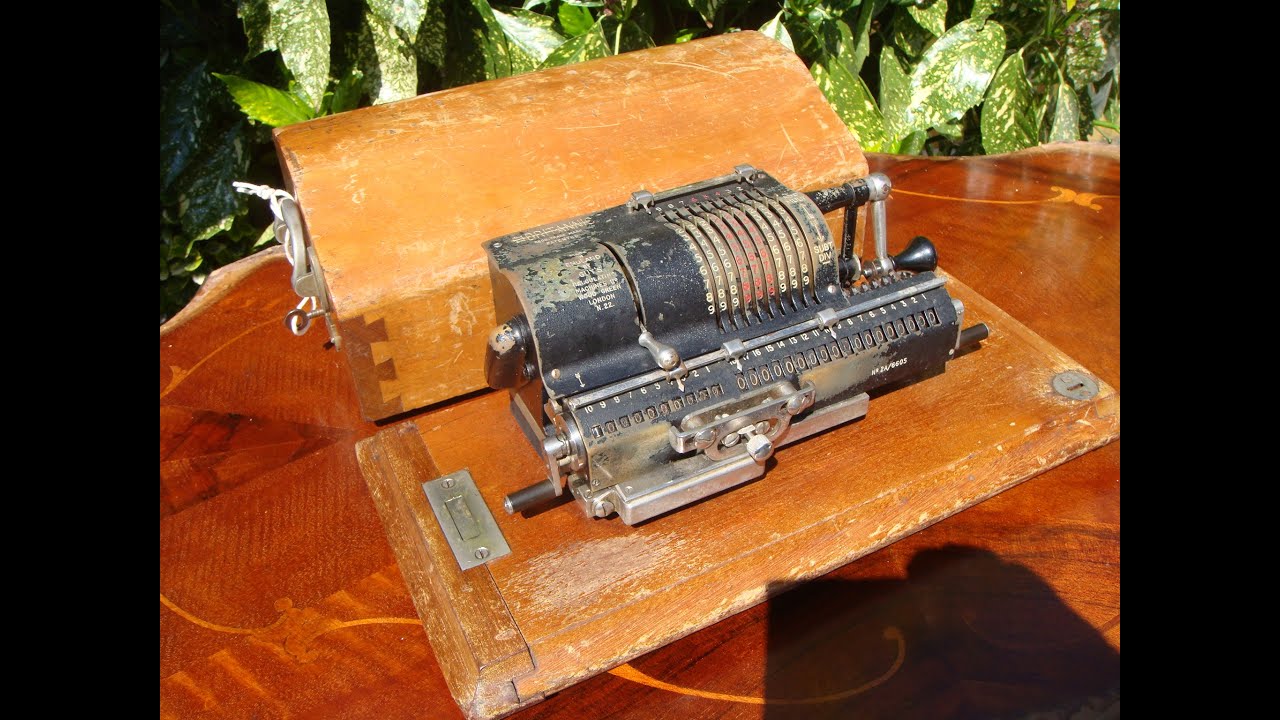


 nice to join in
nice to join in
